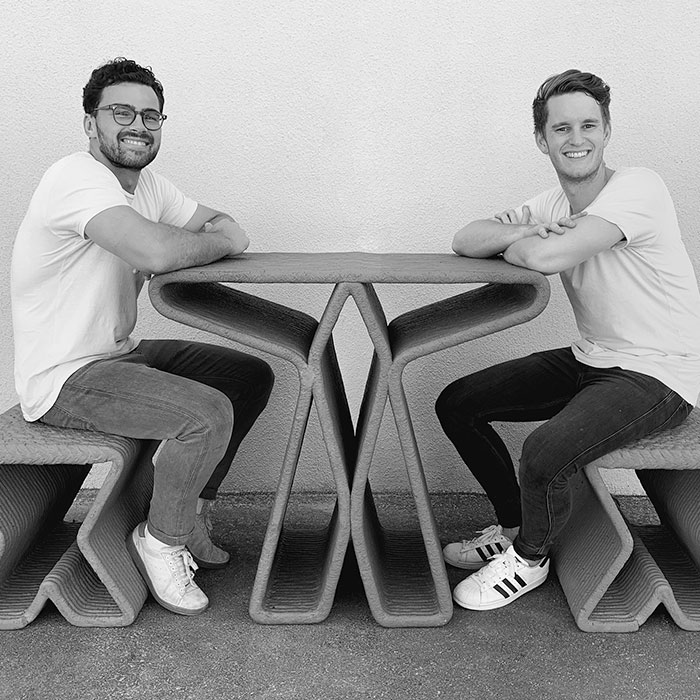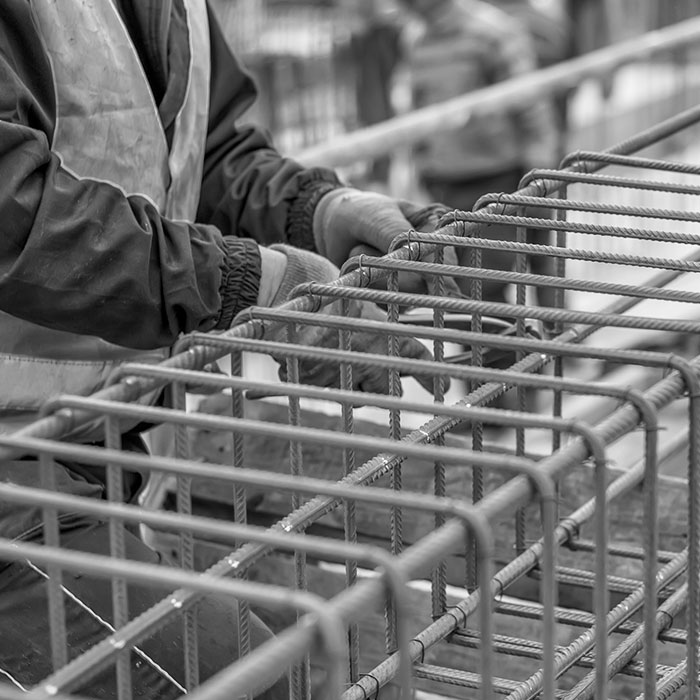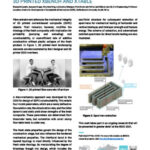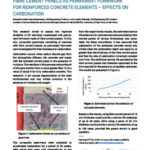Projects
The IIBCC teamed up with renowned academic teams across the globe to advance the topic of fibre cement.
These ongoing, long-term engagements are an effort to promote academic research in the field, spark interest for the topic among students (and future professionals) and provide practitioners with sound information about new technologies and applications.
The projects will be showcased at the upcoming IIBCC conference and published in the related conference proceedings. Interim research reports are available for download.

Reliable results with 3D Printing: The X-Bench and X-table
Stellenbosch University, South Africa

Researchers at the Stellenbosch University (SU) in South Africa took on a complex challenge: Printing 3D using a high-performance fibre-concrete mix with maximum predictability of the end result.
3D-printing is receiving exceptional attention from academia and industry, particularly in the context of the 4th Industrial Revolution. For concrete applications, this technology offers design and construction freedom, renders direct results without requiring traditional moulds and leaves little to no waste.
The team at Stellenbosch University is well-versed in this technology: In 2017/18, it designed and built its own industry-grade, gantry-type concrete printing facility, the first of its kind on the African continent.
For the purpose of this research project, the team contrived a set of outdoor furniture – the XTable and XBench. A key goal was to achieve the perfect balance between printer configurations, material mix and rheology, i.e. flow of the mix. The balance allows to not only print the desired 3D object without it collapsing but also to achieve the required properties, including structural integrity, with an appropriate degree of reliability. Based on their findings, the team developed a four-parameter Rheo-mechanics model, which since has been published in international journals.
The project is currently reviewed for upscaling for the local construction industry and specific material properties, such as those required for energy-efficient buildings. Also, the project team is working on a second, improved printing facility.
Permanent formwork for concrete structures
University of Cape Town, South Africa

Researchers at the University of Cape Town (UCT) are assessing how fibre cement panels deployed as permanent formwork in construction can improve the service life of the underlying reinforced concrete elements.
Permanent formwork is a relatively new development in construction. It describes formwork left in place once the concrete has set and forms part of the built structure. This approach allows for a quicker turn-around and reduced costs compared to traditional methods; it can also benefit the structure itself as it protects the underlying concrete from harmful environmental influences such as moisture, oxygen, chlorides and carbon dioxide.
The aim of this project is to gain a comprehensive understanding of all the technical benefits and the potential for applications in construction. The final outcome is a guideline for practitioners on how to use permanent formwork for improved durability of concrete structures.
The study combines expertise in concrete durability, material characterisation for deterioration and durability as well as formwork technology and concrete construction procedures. The experimental work is done in the laboratories of the University of Cape Town, which are specialised for testing and analysing structural and concrete materials.
Water management in production
Complutense University of Madrid, Spain and University of São Paulo, Brazil

In a collaboration between Complutense University of Madrid (UCM) and the University of São Paulo (USP), researchers set out to find solutions for water management in manufacturing plants.
Water is essential in the production process of fibre cement composites, as it mixes the required components, i.e. cement, fibre and additives. At the production plant, water is deployed in a closed circuit which allows it to be reused with minimal need for replenishment. However, the water quality deteriorates during the process and, to ensure the quality of the final product, requires that the water is neutralised before being fed back into the cycle.
For this project, researchers are investigating a set of key questions relating to water contamination with organic and inorganic matter: Are the substances affecting the process and/or the final product? Which substances remain and/or change in the cycle; where do they originate? What can be done to limit and remove residue matter? The removal techniques – under investigation are filtration, absorption and ionic exchange – will be evaluated for their feasibility and impact in practice.
The trans-continental collaboration between the two universities is made possible with online conference rooms and similar technology where the teams discuss findings and insights. The experimental work is shared across the teams, with São Paulo focussing on organic matter and Madrid on inorganic matter.


